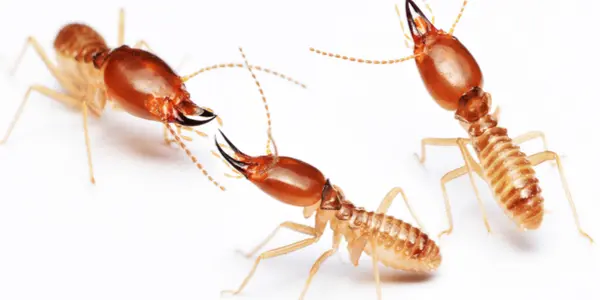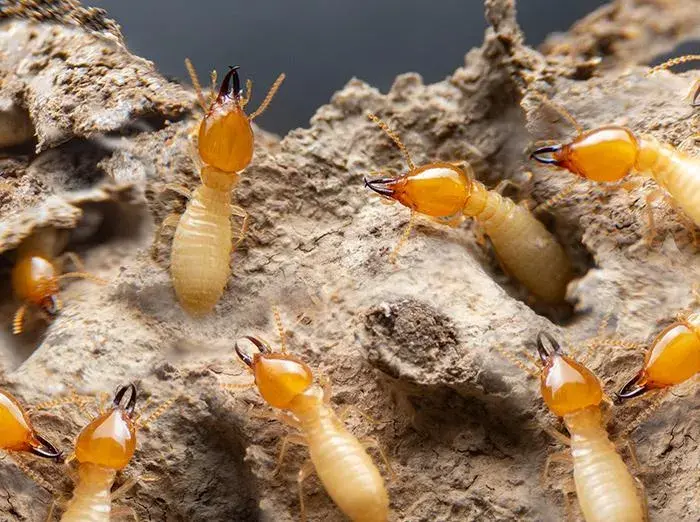Invisible Invaders: Discover How to Protect Your Space from Termites!

Termites (Isoptera
)
Size: 4–12 mm in length (depending on species)
Color: Ranges from pale cream to brown or black
Body: Soft-bodied, with a distinct head
Wings: Only in swarming; transparent with a uniform vein pattern
Antennae: Straight and bead-like, key for navigation food
Mouthparts: Strong and designed for chewing wood and plant material
- Found in large colonies, with some members designated for specific roles like workers, soldiers, or reproductive individuals

Feeding Preferences
These insects primarily consume materials rich in plant fibers, focusing on items like wooden beams, furniture, drywall, and insulation found within structures. In areas with human activity, they are attracted to construction materials that contain organic compounds, especially those exposed to moisture or decay. They can damage structural supports, foundations, and household items by extracting nourishment from these materials. Additionally, they are drawn to areas with poor drainage or water intrusion, as this makes the food sources more accessible and easier to break down. Their ability to feed on hidden or concealed areas makes them particularly challenging to detect, especially in densely built environments with multiple layers of construction and damp spaces.

Habitat
Termites are commonly found in areas where moisture, shelter, and food are readily available. In densely populated areas, they prefer spaces with easy access to wooden materials, including foundations, beams, furniture, and other cellulose-rich structures. They thrive in damp, dark spaces such as beneath buildings, near leaky pipes, or in improperly ventilated areas. These pests build their colonies in concealed locations, such as soil close to structures, hidden voids in walls, or beneath paving stones. Urban environments with older buildings, poorly maintained drainage systems, or areas with construction activity provide ideal conditions for termite infestations, as they can easily access hidden pathways to invade spaces where resources are abundant.

UPM's AIR Approach for Termites:
- Assess: Inspect your property for signs of termite activity, such as mud tubes, damaged wood, and swarming termites. Focus on areas with wooden structures, including foundations, basements, and crawl spaces, to assess the severity of the infestation.
- Implement: Use targeted treatments such as liquid termiticides, baiting systems, or professional fumigation. Address both the visible damage and any potential hidden colonies. Repair any structural damage and reduce moisture levels to make the environment less conducive to termites.
- Review: Regularly monitor your property for signs of new termite activity. Continue preventive measures, such as maintaining proper ventilation, reducing wood-to-soil contact, and conducting periodic inspections, to prevent future infestations.
Frequently Asked Questions
Look for mud tubes, hollow wood, discarded wings, or small holes in wooden surfaces.
They typically find entry through cracks, gaps, or areas near the foundation and soil.
Yes, they prefer damp wood, untreated wooden areas, or spaces with cellulose-based materials.
Damage can occur within months, depending on the size of the colony and access to resources.
They can move between locations, establishing new colonies when resources are limited.
Yes, high humidity and rainfall can encourage their movement into structures.
Specialized treatments such as bait systems, liquid barriers, or spot treatments are used to eradicate infestations.